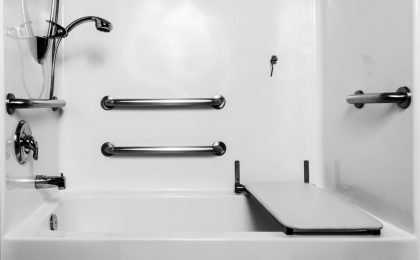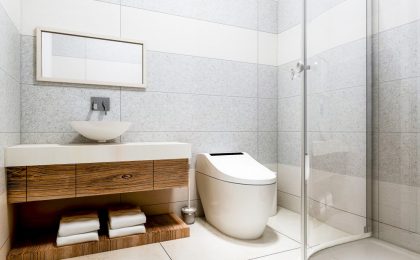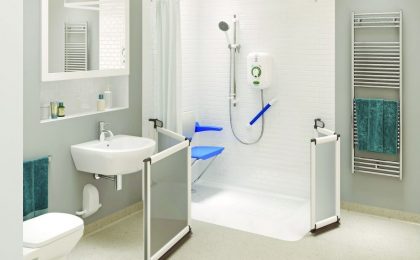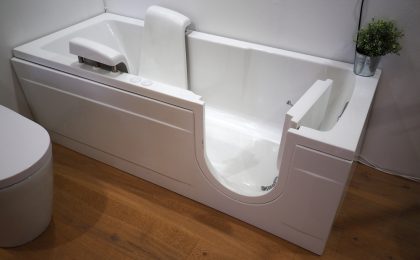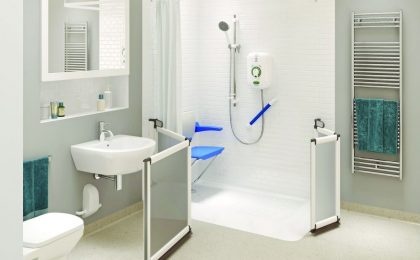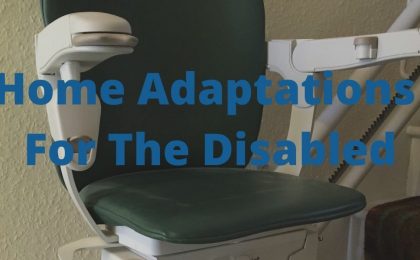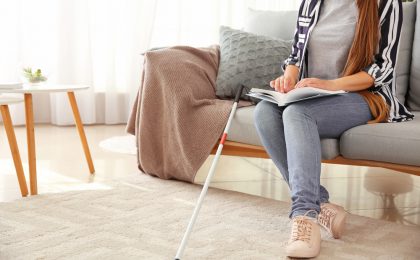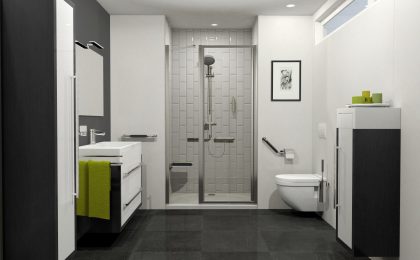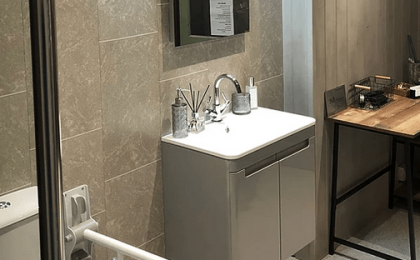There are more than 11 million people in the UK with a physically debilitating illness, impairment, or disability – which can turn simple daily tasks into a huge struggle. Fortunately, there are adaptations you can make to a bathroom to make life easier, especially for tasks such as showering and using the washbasin, one being the versatile and practical ‘Disabled Wet Room’. Such modifications can allow you to create a safer and more practical space that allows the disabled user to retain as much independence as possible.
This article by Age Care will provide some insight into the essentials for disabled wet rooms, as well as how certain aspects can promote independence for users. For further inquiries about disabled wet rooms, be sure to contact our highly knowledgable team. Our team will be more than happy to assist you with any questions.
Space
If you are planning to create a wet room with a disabled user in mind, room size is one of the main things that need to be considered. Although you can fit a wetroom in just about any space, a wheelchair user will require greater room to maneuver than the average individual. You may need to think carefully about the fixtures within the bathroom to maximise space, including the size and positioning of the wet room fixtures.
Level Access Shower
One of the biggest differences between a disabled wet room and a normal bathroom is the shower feature. Level access showers are perfect for wheelchair users and those with limited mobility, as they eliminate the need to raise your legs off the floor to get into a bath or shower unit. Wheelchairs can be positioned under the shower with ease via the level access, or alterative support could be in the form on a fixed shower seat. This also means that the chance of slips, trips, and falls is also much lower, so the individual may be able to carry out these tasks without the support of another.
Support Bars
One of the most important safety features to include in a disabled wet room designed for disability is the installation of support bars or ‘grab bars’ – they offer stability, security, and safety when it comes to maneuvering around. They should be installed around the main areas of the room, such as at the entrance of the shower, inside the shower area, next to the toilet, and next to the sink basin. Retractable ones are good for next to the toilet so it can be pulled down from the wall.
Anti-Slip Flooring
Anti-slip flooring is a must-have in a wet room designed for disabled people. As we all know, water can be slippy, but it’s particularly unsafe for those who are fragile or with limited mobility. Making sure that you keep users safe with the best quality flooring is important for the users and their loved ones’ peace of mind.
Be sure to contact Age Care for further information on disabled wet rooms. Our specialists are highly knowledgeable and happy to help.












